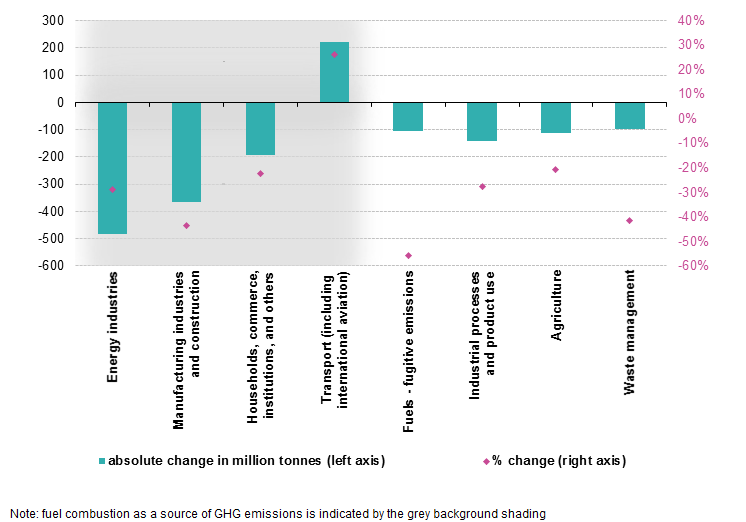> Planet
Does transport represent 5%, 15%, 25% of GHG emissions?
In the European Union, agriculture represents 10% of GHG (Green House Gases) emissions, ie the third source sector. Transports are the second contributor, after energy and electricity production. All transports (including international aviation) represents a quarter of Europe’s greenhouse gas emissions. Air transport is the second source of transport GHG emissions (after road), and represents 3,6% of GHG emissions in the European Union.
Greenhouse gas emission by source sector in Europe, change from 1990 to 2016. (million tonnes of CO2 equivalent and % change)

Recent trends and evolutions show that GHG emissions will not decrease in the future. In fact, IATA (International Air Transport Association) forecasts that over the next two decades, the number of passengers will increase of +3,5% per year, to reach 8,2 billion in 2040. – ie a rise in GHG emissions of 16% by 2040.

The increased demand to fly creates a responsibility to expand in a sustainable manner. The aviation industry remains committed to its goals of carbon-neutral growth from 2020 onwards and cutting CO2 emissions to half 2005 levels by 2050.
As part of its ISO 14001 environmental policy, Animine offsets GHG emissions released by all flights taken by employees since 2013, in collaboration with Geres (https://www.geres.eu/en/).
Take a 5 minutes break and see how many planes are above your head at the moment! www.flightradar24.com
